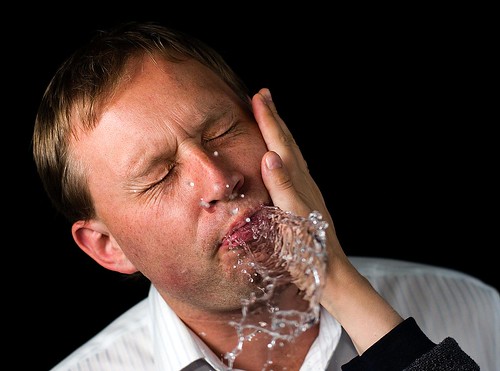I'll be taking a break for a few weeks and returning mid-January. I'll leave you all with a list of my ten most popular posts for the year.
The New Zealand Patents Bill has been a hot topic thanks to a campaign by the open source community to introduce a European-style exclusion for computer software. The patentability of software has also been the subject of a few decisions of the US Courts and the BPAI. Copyright enforcement news in both New Zealand and Australia has also been popular.
Alice and the Abstract Idea: When is a computer-implemented invention a mere "abstract idea”? Does the presence of a computer in a claim make an unpatentable "abstract idea" a patentable invention? Should it matter that a computer-implemented invention is claimed as a method, system, or storage medium? Is there any real difference between these types of claims? These are the questions that the United States Court of Appeals for the Federal Circuit is going to be considering over the next 12 months.
The show goes on: These are interesting times for copyright infringement actions. We have seen a conclusion to the long running dispute between Roadshow Films/AFACT and iiNet in Australia. We have also seen a couple of test cases emerge for New Zealand's three strikes law.
A forum on software patents: Fellow blogger Patentology comments on a recent IP Forum held by the IP Australia on the subject of 'software patents'.
KOHA - Better late than never: Another chapter closes on the KOHA trade mark saga. The New Zealand trade mark application is the subject of a kind of tug-of-war between two competing factions within the open source community that have fallen out with each other.
D. finds non-functional descriptive matter: The Board of Patent Appeals and Interferences considers a data structure for generating network data traffic utilizable in communication systems. The BPAI rejected the data structure claim as relating to non-functional descriptive material.
The embedded software conundrum: The New Zealand Patents Bill had a second reading in Parliament this year. On the table is a Supplementary Order Paper (SOP) setting out proposed amendments to the Bill. The SOP clarifies the extent to which computer programs will be patentable. It better reflects the intentions of the Parliamentary Commerce Select Committee who originally recommended changes to the Bill.
A public slap from Twitter: Laws can certainly be broken in 140 characters or less and Twitter is starting to take a more transparent approach to copyright infringement. It is a bad look for your company to be accused of copyright infringement. And even worse to be slapped so publicly.
Hu finds that storage is the key: The BPAI considered the patentability of a claim in the field of performing log-based recovery by allowing a plurality of worker processes to process in parallel a plurality of work items in a log. Each work item represented an ordered operation on a corresponding data object. The BPAI found that the term "computer-readable medium" is broad enough to cover intangible media. However, a computer-readable storage medium is confined to tangible media for storing data.
Edelson finds an abstract intangible asset: The BPAI looked at a claim for a way for creating financial instrument derivatives of rollups of recurrent yield monetary based assets. Whatever that means! The Board found that simply using some computer-implemented method in some undefined manner alone cannot confer patentability.
Patent party in the House: It's always good to try something new. I gathered some of my work colleagues together and we watched the Second Reading of the New Zealand Patents Bill on the tellie. I didn't quite know what to expect but I wasn't surprised at what I saw. It was certainly an interesting experience.
Photo courtesy of author Daniel Peckham under Creative Commons licence.





